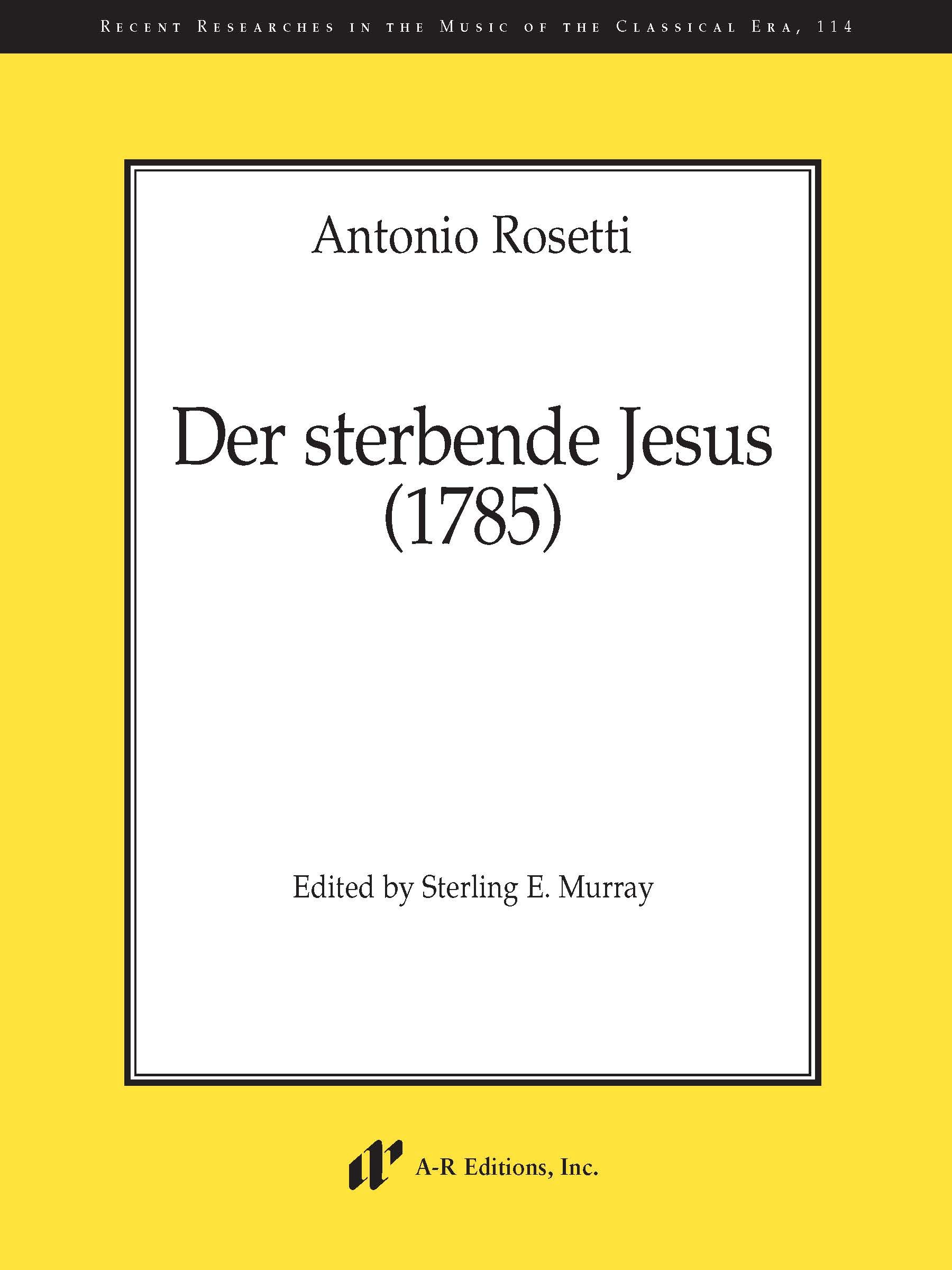Recent Researches in the Music of the Classical Era, 114
Edited by Sterling E. Murray
xx, 4 plates, 227pp.
ISBN 978-1-9872-0335-6. $320
Click HERE to buy this at the publisher’s website.
[PLEASE NOTE: This link is NOT sponsored]
Though perhaps best known nowadays as a composer of symphonies, concertos and partitas, Antonio Rosetti (who was born in Bohemia, spent years of his early life in St Petersburg, then Wallerstein before dying, aged only 42, a mere two years after being appointed Kapellmeister in Schwerin) also wrote some impressive vocal music.
Der sterbende Jesus is a passion-oratorio in the tradition of Graun’s Der Tod Jesu. The four characters (a soprano as Mary, St John who was sung by a tenor, an alto as Joseph of Arimathea and Jesus himself, bass) are accompanied by a fairly large orchestra of flute, 2 oboes, bassoon, 2 horns, 2 trumpets with timps, and strings. The work is a sequence of recitatives and arias, interspersed with movements called “Chorale” in which a four-voice is accompanied by the woodwinds (including horns) and others labelled “Chorus” in which the whole ensemble performs. There are elements of narrative drama, but essentially it is a series of reflections initially on Jesus’s death but ultimately in his triumph over death, and that sense of a glorious overcoming of the “power of the grave” is skilfully captured in Rosetti’s final chorus. Music by the lesser masters of this period is often overlooked because of the perceived superiority of their illustrious contemporaries, Haydn and Mozart. On the evidence of this score, Rosetti’s vocal music certainly ought to be better known; the parts he wrote for Mary and St John is particularly demanding.
A-R Editions continue to champion repertoire that has been ignored for too long. Someone, let’s have a recording!
Brian Clark
